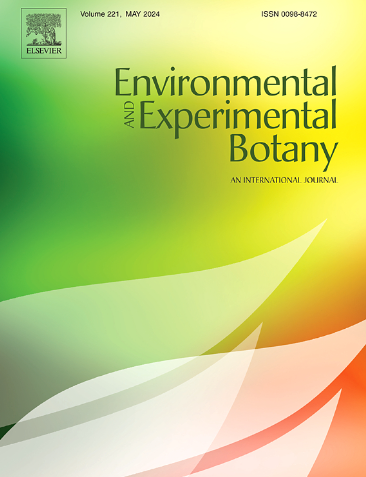Palette of green: Exploring the effects of different wavelengths of green light on biomass and morphology in lettuce (Lactuca sativa)
IF 4.7
2区 生物学
Q2 ENVIRONMENTAL SCIENCES
引用次数: 0
Abstract
It is increasingly evident that green light (500–600 nm) affects plant growth, but the varying effects of different regions within this waveband remain unclear. We investigated how different regions of green light affect lettuce (Lactuca sativa) growth, morphology and physiology. Lettuce was grown in a climate chamber with red/blue light as a reference treatment. In three green light treatments, 28 % of the red/blue light was replaced by green light. A higher fraction of green light logically meant a lower fraction of red and blue light. The green light was provided either by narrowband green LEDs peaking at 515 nm or 550 nm, or by a broadband green LED. In all treatments, light intensity was 212 μmol m−2 s−1. After 21 days of growth, shoot biomass (+14–29 %) and height (+16–18 %) increased in all green light treatments compared to the reference, while leaf photosynthetic gas exchange and pigmentation remained unchanged. The largest biomass (+29 %) and leaf area (+18 %) were obtained in the narrowband green light treatment peaking at 550 nm. We conclude that the increase in lettuce biomass was not caused by a higher carbon assimilation per leaf area but may instead be explained by improved light distribution within the canopy. Our results suggest that specific regions in the green light waveband are more beneficial to lettuce growth than others.
绿色调色板:探索不同波长绿光对生菜生物量和形态的影响
越来越明显的是,绿光(500-600 nm)影响植物生长,但该波段内不同区域的不同影响尚不清楚。研究了不同区域的绿光对生菜生长、形态和生理的影响。生菜在以红/蓝光作为对照处理的气候室中生长。在三种绿光处理中,28% %的红蓝光被绿光取代。从逻辑上讲,绿光的比例越高,红光和蓝光的比例就越低。绿光由窄带绿色LED提供,峰值为515 nm或550 nm,或由宽带绿色LED提供。所有处理的光强均为212 μmol m−2 s−1。生长21 d后,与对照相比,所有绿光处理的茎部生物量(+ 14-29 %)和株高(+ 16-18 %)均有所增加,而叶片光合气体交换和色素沉着保持不变。在窄带绿光处理下,生物量(+29 %)和叶面积(+18 %)最大,在550 nm处达到峰值。我们认为,生菜生物量的增加不是由于每叶面积碳吸收的增加,而是由于冠层内光分布的改善。我们的研究结果表明,绿光波段的特定区域比其他区域更有利于生菜的生长。
本文章由计算机程序翻译,如有差异,请以英文原文为准。
求助全文
约1分钟内获得全文
求助全文
来源期刊

Environmental and Experimental Botany
环境科学-环境科学
CiteScore
9.30
自引率
5.30%
发文量
342
审稿时长
26 days
期刊介绍:
Environmental and Experimental Botany (EEB) publishes research papers on the physical, chemical, biological, molecular mechanisms and processes involved in the responses of plants to their environment.
In addition to research papers, the journal includes review articles. Submission is in agreement with the Editors-in-Chief.
The Journal also publishes special issues which are built by invited guest editors and are related to the main themes of EEB.
The areas covered by the Journal include:
(1) Responses of plants to heavy metals and pollutants
(2) Plant/water interactions (salinity, drought, flooding)
(3) Responses of plants to radiations ranging from UV-B to infrared
(4) Plant/atmosphere relations (ozone, CO2 , temperature)
(5) Global change impacts on plant ecophysiology
(6) Biotic interactions involving environmental factors.
 求助内容:
求助内容: 应助结果提醒方式:
应助结果提醒方式:


